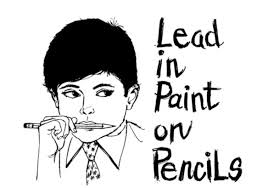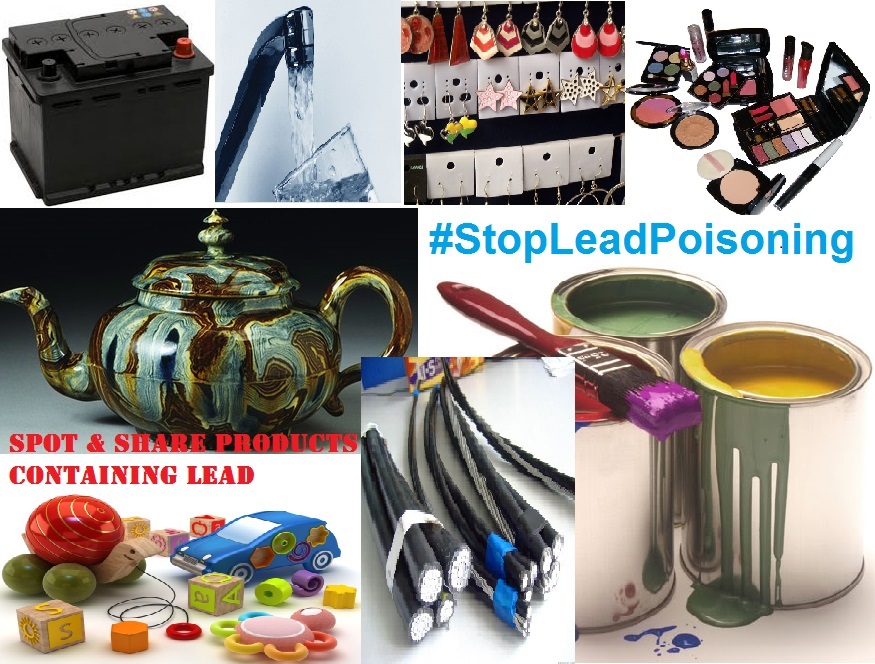Lead poisoning: How safe are you?
One day my son poked his finger with pencil lead and screamed frantically fearing he might be ‘lead poisoned’. I shrugged off his fear saying lead is not harmful for the human body and that pencil lead does not contain lead, it a mixture of graphite and clay.
But after doing some research, I realized that lead accumulated in the body has many health hazards. Although lead has many uses like in the automobile industry, once the element is released into the environment, it finds its way into the soil, air and water. Human beings absorb led by inhalation, ingestion and dermal contact. Children under the age of 5 absorb 50% of the lead they ingest. Read how to celebrate toxic-free, lead-free holi in this post.
In developed countries like US the blood lead level in children has to be less than 5microgram/deciliter of blood. The more the level of lead in the body, greater are the chances of acquiring health related issues. Children are the most vulnerable as their IQ may drop if the toxicity increases. In developed countries an adult having a blood lead level of more than 40mcg/dl has to undergo medical treatment to reduce lead level to less than 40mcg/dl.
Symptoms of Lead poisoning
It is not the pencil lead, but the paint used on the pencil which may contain lead. Children tend to to eat the paint while writing. Lead accumulates over a period in the blood and so it is hard to detect. Lead poisoning goes undetected as many of the complications of lead poisoning can be confused with other diseases: tiredness and fatigue, headache, anemia, abdominal pain and cramps, hearing damage, learning disability, slow growth,……..
Where are we exposed to lead?
Lead may be found everywhere – in the food, house paint, toys, cosmetics, lead batteries, etc. If a blood lead test is conducted we will find that some of us have unacceptable blood lead level. According to tests conducted by organisations working towards spreading awareness of lead poisoning, 51% of children in cities in India have blood lead level of more that 10mcg/dl. Until you are using products that mention ‘lead free’ on the label, you may be surrounded by many products in an around the house that contain lead.
- Fuel: You might have heard of the term ‘unleaded petrol’. The good news is – as part of ‘project Lead-Free’ conducted by some organizations, oil companies now offer lead-free petrol. Still in some countries, lead petrol is used.
- Paint: According to an expert, any product used for providing colours like colouring powders and crayons may contain lead. In India nowadays we get unleaded paint. But paint companies can mislead the consumers with confusing ads. There is a difference between ‘no lead’ and ‘no added lead’. A smart consumer must be able to detect the difference.
- Glass: The translucent and colourless glass is mostly given the attractive colours using lead.
- Water: If your home or the housing colony has a lead based piping system, then lead is leaching into your drinking water.
- Newspaper Ink: The ink used in newspapers and magazines may contain lead. So when you wrap food items in newpapers, the lead in ink might be absorbed by the food.
- Trinkets:During the Christmas season , a shop keeper in the US had to remove all the trinkets containing high level of lead kept for sale.
- Lunch Box:Then cheap colourful lunchboxes might have some amount of lead.
- Painted Pottery: Thanks to the interest of foreign tourist in painted pots, shopkeeper voluntarily say that the pots are not painted with lead paint.
What are the precautions?
- Check if your house was painted with lead paint and if the water contains lead.
- Avoid tinned food sealed lead soldering. Buy lipsticks that are lead free.
- Do not cover food with printed side of plastic covers as the print might contain lead.
- If you children play with peeled paint or soil; check the soil and pain for lead concentration.
- Maintaining hygiene at home by asking children to wash hands before and after meals.
[sam_ad id=”15″ codes=”true”]







32 comments